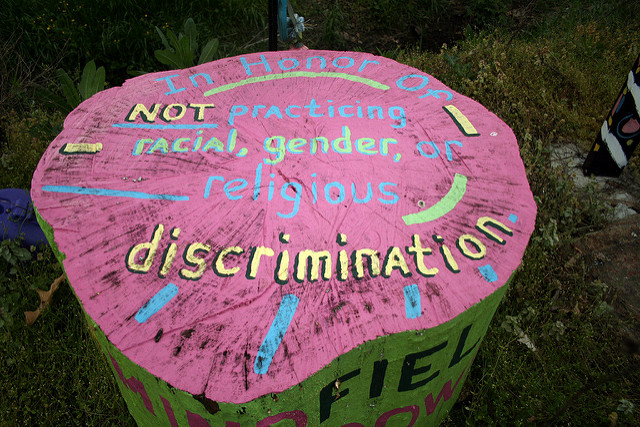Identifying Common But Overlooked Examples of Discrimination in the Workplace

In today’s professional environment, workplace discrimination remains a significant issue, often manifesting in subtle and overlooked ways. Recognizing and addressing these issues is crucial, not just for fostering a healthy work environment but also for protecting your legal rights. This article aims to help professional women identify common but often unnoticed forms of discrimination, and offers guidance on what steps to take if you or a colleague experience such unfair treatment.
Recognizing Subtle Forms of Discrimination
Discrimination isn’t always overt. Sometimes, it takes on more subtle forms that can be harder to spot. Here are a few examples of how discrimination might manifest in the workplace:
Unequal Pay and Opportunities
One of the most pervasive but often overlooked forms of discrimination is unequal pay. Women frequently receive less compensation than their male counterparts for doing the same job. Additionally, opportunities for advancement might be unequally distributed, with men being favored for promotions or high-visibility projects.
Example: If you notice that a male colleague with similar qualifications and experience is earning more than you, or if he is consistently given projects that lead to promotions while you are sidelined, this could be a sign of gender-based discrimination.
Biased Performance Reviews
Performance reviews should be objective, but unconscious biases can sometimes influence the feedback women receive. Women might be described as “too aggressive” or “not assertive enough,” while men exhibiting the same behaviors are labeled as “strong leaders.”
Example: If your performance reviews focus disproportionately on personality traits rather than your work accomplishments, or if the feedback seems inconsistent compared to male colleagues, this could indicate bias.
Exclusion from Important Networks
Networking is crucial for career advancement, but women are often excluded from key networking opportunities, whether intentionally or not. This can happen in the form of not being invited to informal gatherings where important business discussions take place or being left out of mentorship programs.
Example: If you find out that significant decisions are being made during informal meetings you weren’t invited to, or if there is a “boys’ club” culture excluding women from important conversations, this is a form of workplace discrimination.
Stereotyping and Microaggressions
Stereotyping involves making assumptions about a person’s abilities or interests based on their gender. Microaggressions are subtle, often unintentional, discriminatory comments or behaviors. Both can contribute to a hostile work environment.
Example: If colleagues or managers make comments assuming that women are more suited to certain types of work (e.g., administrative tasks) or less capable of handling demanding roles, these are instances of stereotyping. Microaggressions might include seemingly offhand remarks about how women are “too emotional” to lead or jokes about gender roles.
Pregnancy and Family Responsibilities
Discrimination can also occur around pregnancy and family responsibilities. This includes being passed over for promotions due to assumptions about future maternity leave, or being denied flexible working arrangements that are offered to other employees. There are multiple laws surrounding pregnancy discrimination and setting the expectation for reasonable accommodations by employers.
Example: If you or a coworker are demoted or face reduced responsibilities after announcing a pregnancy, or if requests for flexible hours are dismissed without valid reasons, these are clear signs of discrimination.
Disability Discrimination
Discrimination based on disability is another critical area that can be overlooked. This includes not providing reasonable accommodations, making assumptions about a person’s capabilities based on their disability, or outright exclusion from activities and opportunities. In some states, it extends beyond physical disability. California also includes amputations, HIV/AIDs, and other chronic illnesses as protected by discrimination.
Example: If a colleague who uses a wheelchair is consistently excluded from company events held in inaccessible locations, or if your requests for accommodations like adaptive technology or flexible hours are ignored or denied, these are signs of disability discrimination.
Steps to Take If You Experience or Witness Discrimination
If you encounter or witness any of the above examples of discrimination in the workplace, it’s important to take action. Here are some steps you can follow:
Document Everything
Keep detailed records of discriminatory incidents. Note the date, time, location, people involved, and a description of what happened. This documentation can be crucial if you decide to file a complaint or take legal action.
Seek Support
Talk to trusted colleagues or mentors about what you’re experiencing. They might provide support, advice, or corroborate your experiences. Additionally, joining professional groups or networks for women can offer a supportive community and valuable resources.
Know Your Rights
Familiarize yourself with your company’s policies on discrimination and harassment, as well as your rights under the law. The Equal Employment Opportunity Commission (EEOC) enforces federal laws prohibiting employment discrimination. Understanding your rights can empower you to take the necessary steps to protect yourself.
Report the Discrimination
Use your company’s internal procedures to report discrimination. This might involve speaking to your supervisor, HR department, or using an anonymous reporting system. Be clear and factual in your report, and reference your documented incidents.
Seek Legal Advice
If internal reporting doesn’t resolve the issue, or if you fear retaliation, consider seeking legal advice. An employment lawyer can help you understand your options and guide you through the process of filing a formal complaint with the EEOC or taking legal action according to the San Francisco employment attorney at The Armstrong Firm.
Support Others
If you witness discrimination against a colleague, offer your support. Encourage them to document incidents and report the behavior. Being an ally can make a significant difference in creating an inclusive workplace.
Creating a Better Workplace for All
Addressing subtle and overlooked forms of discrimination is essential for fostering an inclusive and fair work environment. By raising your own awareness, documenting incidents, and taking appropriate action, you can help ensure that discrimination doesn’t go unchecked. Together, we can create workplaces where everyone has the opportunity to succeed based on their merits, free from bias and discrimination.
Remember, you have the power to make a difference, both for yourself and for your colleagues. Don’t hesitate to stand up against discrimination—your actions can lead to meaningful change in your workplace and beyond.


